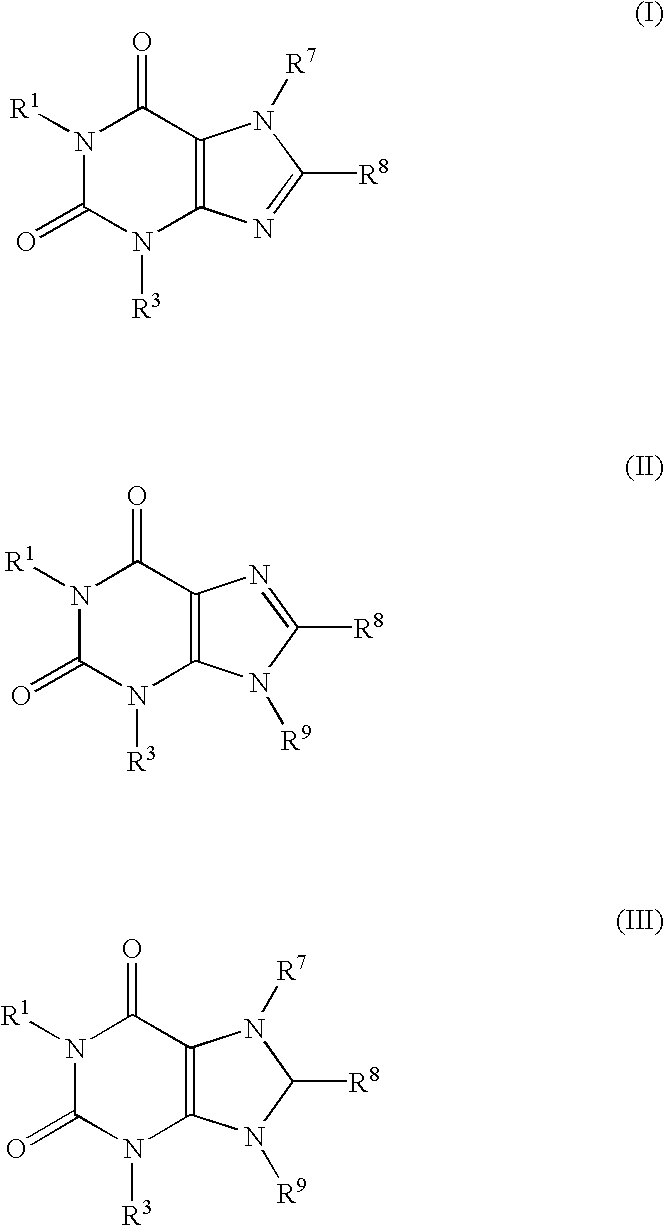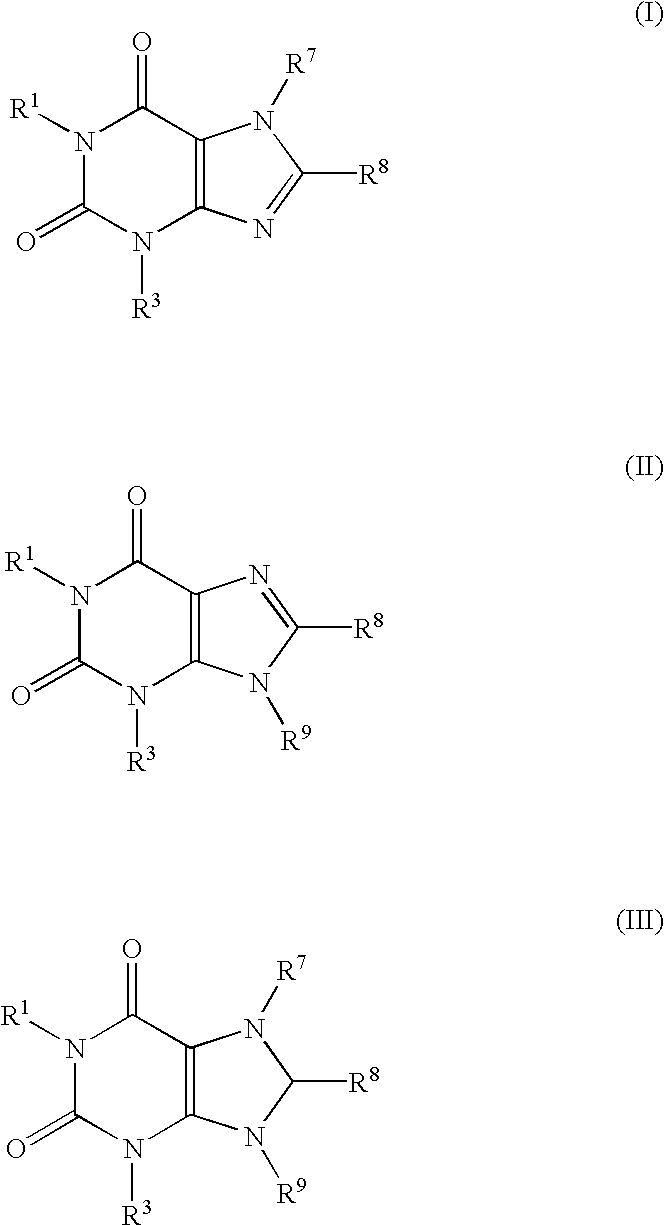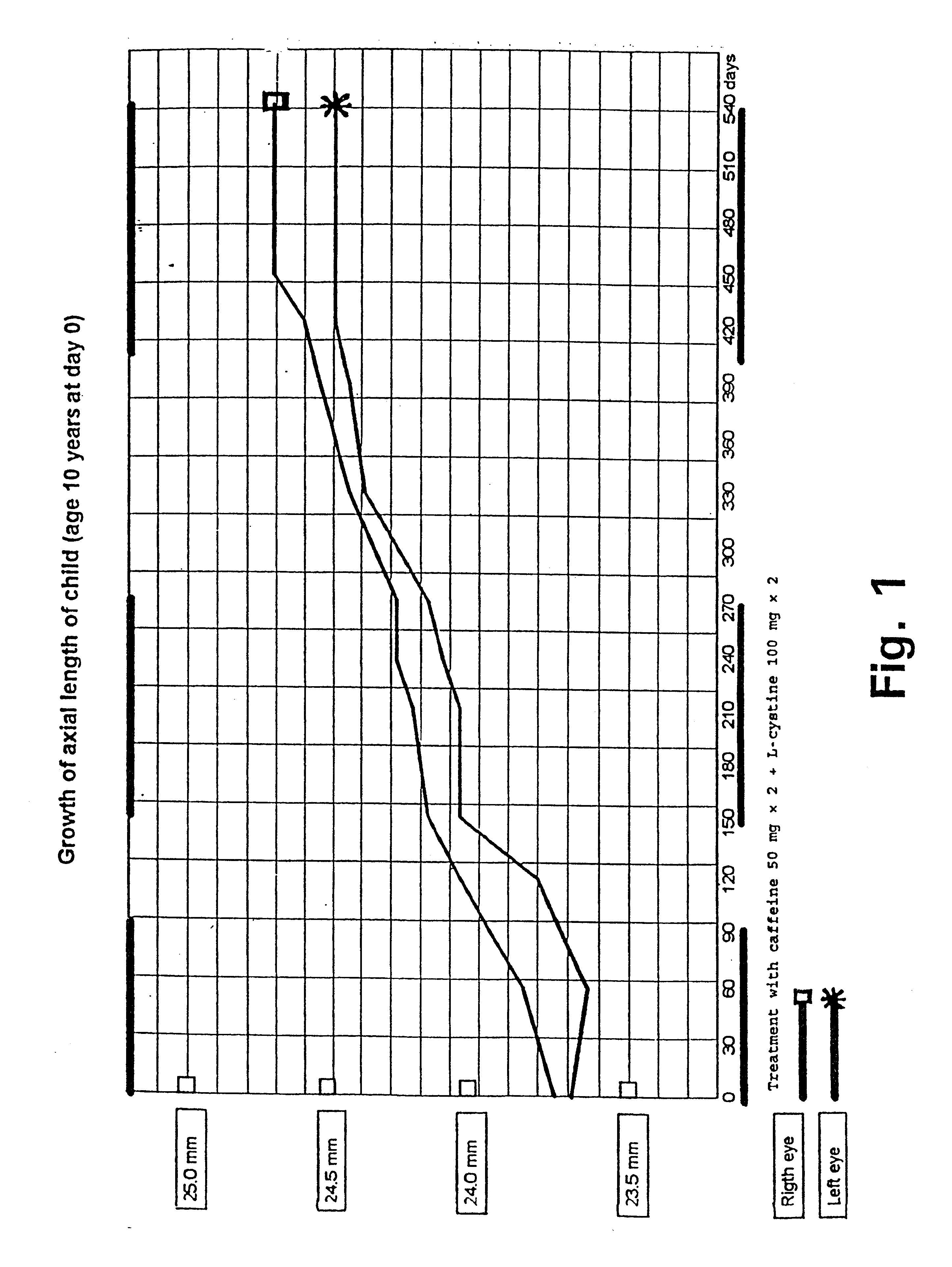Screening method
a screening method and sclera technology, applied in the field of screening methods, can solve the problems of no effect of eye drops in humans developing myopia, high risk of severe sight-threatening complications, and inability to stretch the sclera in mature rabbits
- Summary
- Abstract
- Description
- Claims
- Application Information
AI Technical Summary
Benefits of technology
Problems solved by technology
Method used
Image
Examples
example 6 extraction
method for substance from natural source.
example 7 extraction
method for substance from natural source.
Example 8 Experiments under investigation:
Comments to the Examples
On the basis of the biochemical results in Example 2 it is likely that a treatment of myopia with caffeine will be more efficient than L-cystine as a moderate dosage of caffeine unambiguously affects all parameters appropriately.
In humans caffeine has a realtively long half-life period (approximately 5 hours). After administration of a dosage of caffeine, the serum concentration of caffeine is therefore dominant, however, with an essential contribution of the pharmacologically active metabolites 1,7-dimethylxanthine (paraxanthine), 3,7-dimethylxanthine (theobromine), and 1,3-dimethylxanthine (theophylline), 1-methylxanthine, 3-methylxanthine, and 7-methylxanthine (heteroxanthine).
In rabbits the half-life period for caffeine is short (approximately 1 hour) and the most essential contribution for the serum concentration comes from the metabolite 1,7-dimethylxanthine whereas the s...
example 1
Materials and Methods
Test animal: Charles River Deutschland Chinchilla Bastard female rabbits.
Number of animals: 6 test animals and 6 control animals
Age: approximately 8 weeks at the commencement of the test.
Weight: 1.4-1.9 kg at the commencement of the test.
Lightness / Darkness cycle: 12 / 12 hours.
Water: ad libitum.
Cages: The animals live in identical cages made of stainless steel (Scanbur), length 1 m, depth 0.52 m, height 0.5 m.
Food: Stanrab standard diet from Special Diet Services, P.O. Box 705, Witham Essex CM8 3AD, UK (further details, see Table A).
Amount of food: Increasing from 75 g per day at the commencement of the test up to 130 g after three months.
Experimental drinking water 1 contained theophyllin in a dose equivalent of 27 mg increasing to 63 mg (added as theophyllin and ethylendiamin in a dose of 33 to 77 mg) daily.
Experimental drinking water 2 contained fluoxetine (Fontex, Lilly) in a dose equivalent of 2 mg increasing to 5 mg daily.
Experimental diet 1 was added caffei...
PUM
| Property | Measurement | Unit |
|---|---|---|
| size | aaaaa | aaaaa |
| height | aaaaa | aaaaa |
| depth | aaaaa | aaaaa |
Abstract
Description
Claims
Application Information
 Login to View More
Login to View More - R&D
- Intellectual Property
- Life Sciences
- Materials
- Tech Scout
- Unparalleled Data Quality
- Higher Quality Content
- 60% Fewer Hallucinations
Browse by: Latest US Patents, China's latest patents, Technical Efficacy Thesaurus, Application Domain, Technology Topic, Popular Technical Reports.
© 2025 PatSnap. All rights reserved.Legal|Privacy policy|Modern Slavery Act Transparency Statement|Sitemap|About US| Contact US: help@patsnap.com



